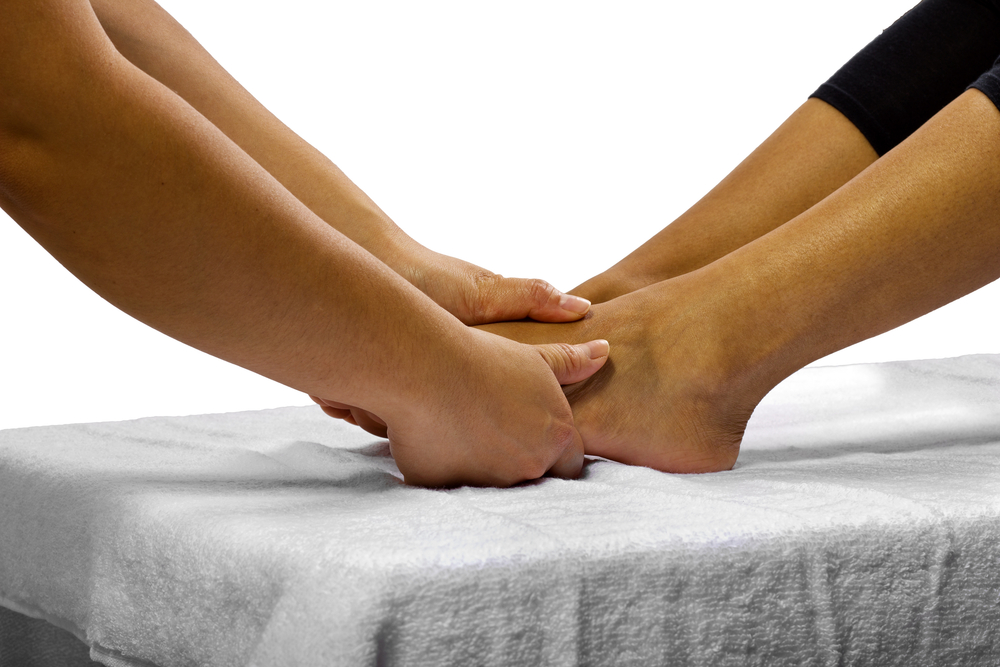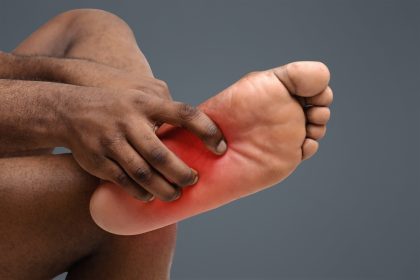Your feet might be telling you more about your heart than you realize. While seemingly unrelated, mounting evidence suggests that foot discomfort may serve as an early warning system for cardiovascular problems. This connection, often overlooked in routine healthcare, represents a crucial intersection between podiatric symptoms and cardiac health that deserves greater attention.
How circulation connects your heart to your feet
The cardiovascular system functions as an intricate network, pumping blood from your heart to every extremity, including your feet—the body’s farthest points from the heart. This distance makes feet particularly vulnerable to circulation problems originating in the cardiovascular system.
When the heart struggles to effectively pump blood, the extremities often show signs first. This occurs because the body prioritizes blood flow to vital organs during cardiovascular stress, potentially reducing circulation to the limbs. The feet, requiring consistent blood supply for normal function, quickly develop symptoms when this flow diminishes.
The connection operates through several key mechanisms:
- Peripheral arterial disease often manifests as foot pain long before more serious cardiovascular events
- Endothelial dysfunction affects both coronary arteries and peripheral vessels simultaneously
- Inflammatory processes that damage heart vessels similarly impact foot circulation
- Microvascular complications affect both cardiac function and foot nerve health
- Arterial stiffness reduces blood flow throughout the entire circulatory system
These pathways explain why foot symptoms sometimes precede more obvious cardiac manifestations by months or even years, potentially offering an early intervention window.
Peripheral arterial disease: when leg pain signals heart trouble
Peripheral arterial disease (PAD) represents one of the clearest connections between foot discomfort and heart health. This condition develops when atherosclerotic plaque—the same substance that clogs coronary arteries—accumulates in leg arteries.
The classic symptom of PAD, intermittent claudication, presents as leg pain, cramping, or fatigue during activity that relieves with rest. This pain typically affects calf muscles but may extend to feet, particularly during walking or climbing stairs. The discomfort emerges predictably when oxygen demand increases and subsides during rest—creating a reliable pattern.
What makes this connection particularly significant is the statistical relationship between PAD and broader cardiovascular problems. People diagnosed with PAD face substantially higher risks for heart attacks, strokes, cardiovascular mortality and poor outcomes after cardiac events
Research consistently shows that PAD doesn’t simply correlate with heart disease—it actively predicts it. The presence of peripheral arterial disease signals systemic atherosclerosis affecting multiple vascular beds, including coronary arteries.
Foot edema: when heart failure shows in swollen ankles
Swelling in the feet and ankles, medically termed edema, frequently signals heart failure—sometimes before other symptoms emerge. This connection stems from the heart’s reduced pumping efficiency, causing fluid retention throughout the body. Gravity naturally pulls this excess fluid downward, making feet and ankles visibly swollen, especially late in the day.
Several characteristic patterns help distinguish cardiac-related foot edema: Bilateral swelling (affecting both feet equally); Pitting edema (where pressing leaves temporary indentations); Worsening after prolonged standing or sitting; Improvement when legs are elevated; Association with shortness of breath, especially during exertion and; Progressive worsening over time without intervention
This swelling creates more than cosmetic concerns—it can cause significant discomfort, skin changes, and limited mobility. The pressure from accumulated fluid often creates dull, aching pain throughout the foot and ankle that worsens with activity.
The relationship between foot edema and heart failure follows a bidirectional pattern. While heart failure commonly causes edema, persistent edema also strains cardiac function by increasing overall fluid volume that the heart must pump, potentially accelerating cardiac decompensation.
Diabetes: the triple threat to feet and heart
Diabetes creates a perfect storm for both cardiovascular disease and foot problems, representing perhaps the strongest link between these two health domains. The metabolic dysfunction in diabetes simultaneously damages heart vessels, peripheral circulation, and nerve function in a mutually reinforcing cycle.
The diabetic foot-heart connection operates through several mechanisms:
Hyperglycemia directly damages blood vessels through advanced glycation end products (AGEs) that accumulate in vessel walls, simultaneously affecting coronary arteries and foot circulation. This vessel damage accelerates atherosclerosis throughout the entire circulatory system.
Diabetic neuropathy diminishes protective sensation in feet, allowing minor injuries to progress unnoticed. This nerve damage stems from the same microvascular complications that affect cardiac function, representing different manifestations of the same underlying disease process.
Immune dysfunction in diabetes impairs wound healing while increasing cardiac inflammation, creating parallel challenges in both systems. The body’s compromised ability to repair damaged tissue affects heart muscle recovery and foot wound healing equally.
The convergence of these factors explains why diabetic foot ulcers strongly predict cardiovascular events. Research consistently shows that people developing diabetic foot complications face substantially higher risks of heart attacks and strokes in subsequent years, suggesting shared underlying pathology.
Gout: when crystal deposits signal metabolic trouble
Gout, characterized by intensely painful crystal deposits often affecting the big toe joint, shares numerous risk factors with cardiovascular disease. This connection extends beyond coincidental association—the metabolic abnormalities driving gout actively contribute to heart problems through systemic inflammation.
The most apparent link comes through elevated uric acid levels, which not only form the painful crystals in gout but also promote endothelial dysfunction in blood vessels; increase platelet aggregation and blood clot risk; stimulate systemic inflammation affecting arterial walls; contribute to metabolic syndrome development and; accelerate kidney dysfunction, further stressing the cardiovascular system
The typical gout attack—excruciating foot pain developing suddenly, often overnight—may therefore signal underlying metabolic dysfunction affecting cardiovascular health. Research consistently shows higher rates of heart attacks, heart failure, and atrial fibrillation among people with gout compared to the general population.
This connection remains significant even after accounting for shared risk factors like obesity, suggesting gout itself independently contributes to cardiovascular risk through inflammatory pathways.
Foot temperature changes: cold feet as circulation warnings
Temperature changes in the feet often reflect circulatory efficiency. Cold feet—especially when accompanied by color changes, numbness, or pain—may indicate compromised blood flow potentially connected to broader cardiovascular issues.
Several patterns particularly warrant attention:
Persistently cold feet despite warm environments may indicate reduced arterial flow. This symptom becomes especially concerning when accompanied by skin changes like thinning, hair loss, or brittle nails.
Temperature differences between feet might suggest unilateral arterial narrowing. Asymmetric coolness, particularly with other symptoms like pain or color changes, requires prompt evaluation.
Sudden temperature changes in feet, especially when accompanied by color shifts, may indicate acute vascular events requiring immediate attention. This pattern sometimes precedes more serious cardiovascular complications.
While occasionally cold extremities rarely indicate serious problems, persistent temperature abnormalities merit cardiovascular evaluation, particularly in people with existing risk factors for heart disease.
Reading your feet: warning signs needing attention
Certain foot symptoms deserve particular attention due to their potential cardiovascular connections. These indicators may appear subtle initially but carry significant implications for heart health:
Cramping pain during walking that consistently resolves with rest suggests arterial insufficiency until proven otherwise. This symptom pattern, especially in smokers or those with cardiovascular risk factors, warrants vascular evaluation.
Non-healing wounds or ulcers, particularly on pressure points, suggest compromised circulation potentially reflecting broader vascular disease. The body’s inability to heal minor foot injuries often signals systemic circulation problems.
Color changes in feet—particularly cyanosis (bluish discoloration), extreme pallor when elevated, or dependent rubor (abnormal redness when feet hang down)—indicate abnormal blood flow potentially linked to heart function.
Hair loss on feet and toes, especially when accompanied by thin, shiny skin or thickened nails, suggests chronic circulation insufficiency. These changes develop gradually as reduced blood flow affects skin appendages.
Burning pain, particularly at night, sometimes indicates small-vessel disease affecting nerve function. This symptom pattern shares pathophysiology with microvascular disease affecting cardiac circulation.
These warning signs prove especially meaningful when they develop gradually without obvious injury or when they occur in people with existing cardiovascular risk factors.
Comprehensive foot care as cardiovascular prevention
The foot-heart connection suggests potential benefits from integrating podiatric care into cardiovascular health strategies. Several approaches show particular promise:
Regular foot screening for people with cardiovascular risk factors helps identify early warning signs before more serious complications develop. Simple assessments of pulses, temperature, and skin integrity can reveal circulation problems requiring further evaluation.
Doppler ultrasound of foot vessels provides valuable information about peripheral circulation that often reflects coronary artery health. This non-invasive testing helps quantify blood flow and identify narrowing that may indicate broader vascular disease.
Comprehensive diabetic foot care significantly reduces both limb loss and cardiovascular events. The protective effects extend beyond preventing local complications to improving overall cardiovascular outcomes.
Treating foot pain appropriately rather than merely masking symptoms enables proper diagnosis of underlying circulation issues. This approach helps identify cardiovascular contributors to foot symptoms before they progress.
Supporting foot circulation through appropriate exercise, avoiding prolonged immobility, and addressing risk factors like smoking has systemic cardiovascular benefits beyond foot health alone.
When to seek immediate help
Certain foot symptoms warrant urgent medical attention due to their potential cardiovascular implications:
Sudden, severe foot pain without injury, especially with coolness, numbness, or color changes, might indicate acute arterial occlusion requiring emergency treatment. This condition can lead to tissue death without prompt intervention.
New, rapidly developing bilateral foot swelling, particularly when accompanied by breathing difficulties, suggests possible heart failure decompensation needing immediate evaluation. This symptom combination often indicates significant cardiac dysfunction.
Foot ulcers showing signs of spreading infection (increasing warmth, redness, swelling) in people with circulation problems require urgent care to prevent systemic complications. These infections can progress rapidly in the setting of compromised blood flow.
Color changes progressing up the leg from the foot suggest potential vascular emergency. This pattern, especially when accompanied by pain, often indicates significant circulation compromise.
Recognizing these emergency situations enables timely intervention that may prevent permanent tissue damage while addressing underlying cardiovascular contributors.
The integrated approach to foot and heart health
Understanding the interconnection between foot symptoms and heart health enables more comprehensive healthcare approaches. Rather than treating these systems separately, an integrated perspective improves outcomes through:
Collaborative care between cardiovascular specialists and podiatrists enables early identification of systemic disease manifestations. This cross-specialty approach helps capture warning signs that might otherwise go unnoticed.
Risk stratification based on both cardiac and foot findings provides more accurate assessment than either system alone. The presence of foot circulation problems significantly changes cardiovascular risk calculations.
Patient education about the foot-heart connection encourages appropriate attention to foot symptoms rather than dismissing them as minor concerns. This awareness helps people recognize potential warning signs requiring medical evaluation.
Lifestyle modifications supporting both heart and foot health—including appropriate exercise, smoking cessation, and dietary improvements—provide synergistic benefits across multiple body systems.
Regular monitoring of both systems in high-risk individuals enables early intervention before significant complications develop. This preventive approach proves particularly valuable for people with diabetes, existing vascular disease, or multiple cardiovascular risk factors.
Prevention strategies protecting both systems
Several strategies simultaneously protect foot and cardiovascular health:
Regular physical activity, particularly walking programs, improves both peripheral circulation and cardiac function. This activity strengthens heart muscle while enhancing collateral circulation development in extremities.
Smoking cessation provides immediate and long-term benefits for both systems by improving oxygen delivery, reducing inflammation, and slowing atherosclerosis progression throughout the body.
Blood pressure management prevents damage to both large and small vessels, protecting heart function while maintaining adequate foot circulation. Even modest blood pressure improvements significantly reduce complications in both systems.
Proper footwear reduces injury risk while supporting healthy circulation. Appropriate shoes prevent pressure points that can lead to ulcers in people with compromised circulation.
Weight management reduces stress on both cardiovascular system and feet while improving metabolic parameters affecting vessel health. This approach addresses a major modifiable risk factor for both systems.
These prevention strategies offer cumulative benefits across multiple health domains, highlighting the integrated nature of foot and cardiovascular health.
The connection between foot pain and heart health represents more than an interesting medical curiosity—it provides a valuable opportunity for early intervention and comprehensive care. By recognizing foot symptoms as potential indicators of cardiovascular status, healthcare providers and individuals can identify problems earlier, intervene more effectively, and improve outcomes across multiple body systems.
Rather than viewing foot pain as simply a local issue, understanding its potential cardiovascular connections enables more complete health assessment and appropriate intervention. This integrated perspective transforms foot symptoms from isolated complaints into valuable information about overall vascular health with implications for long-term well-being.












